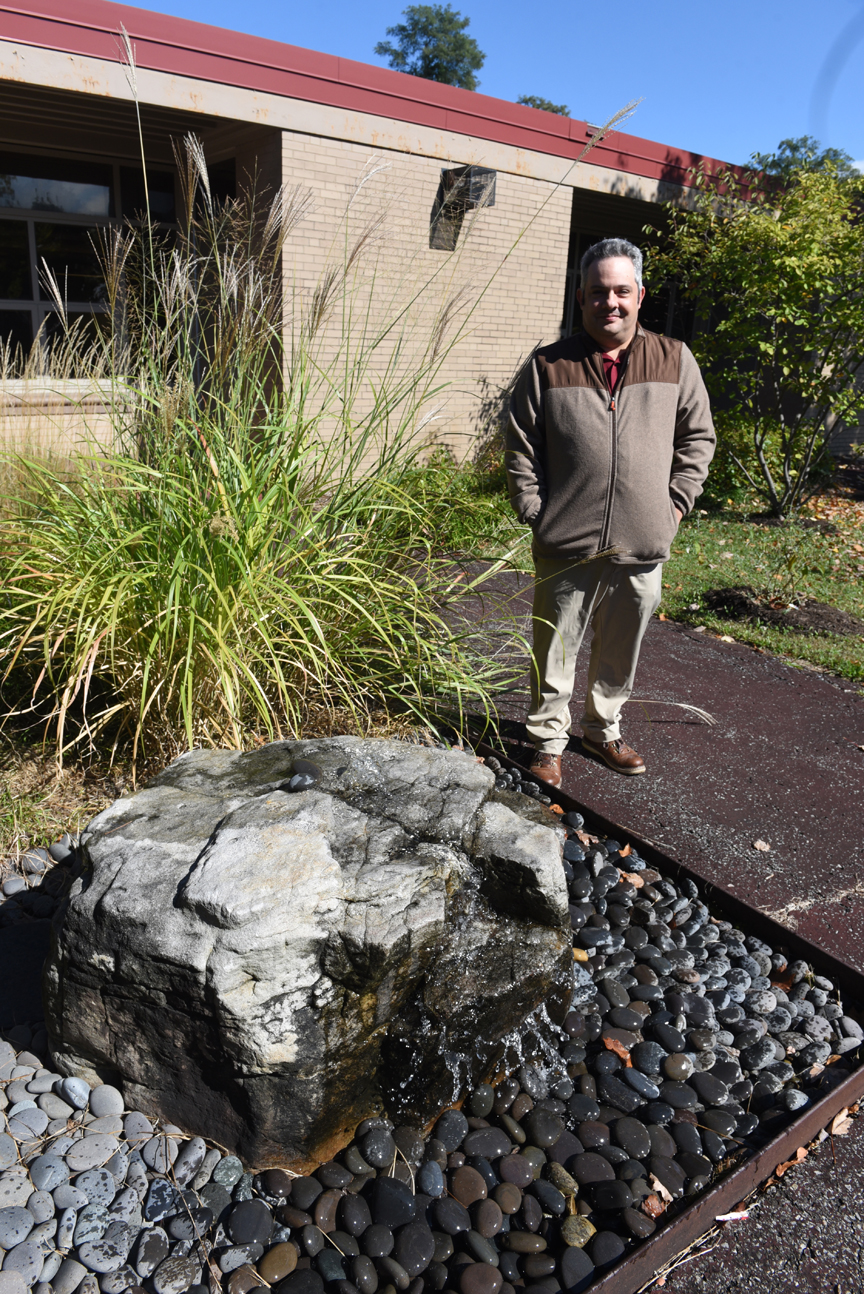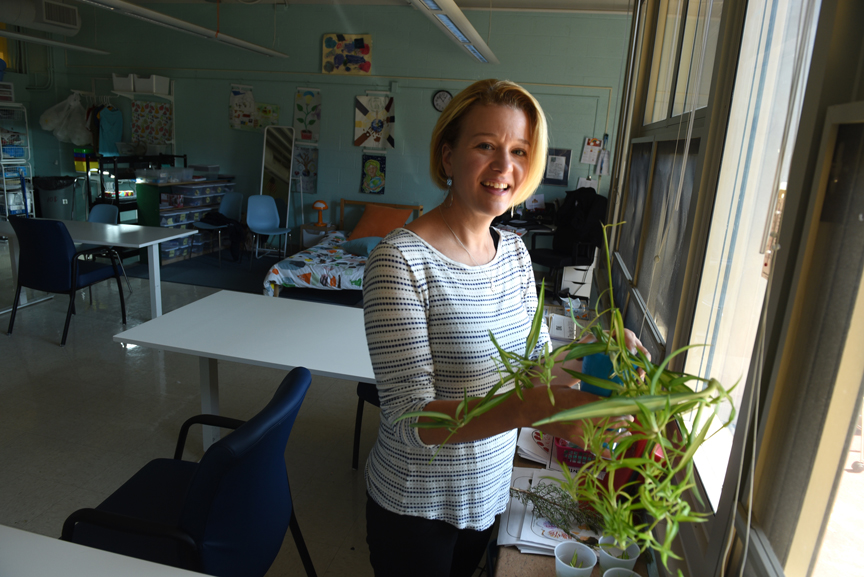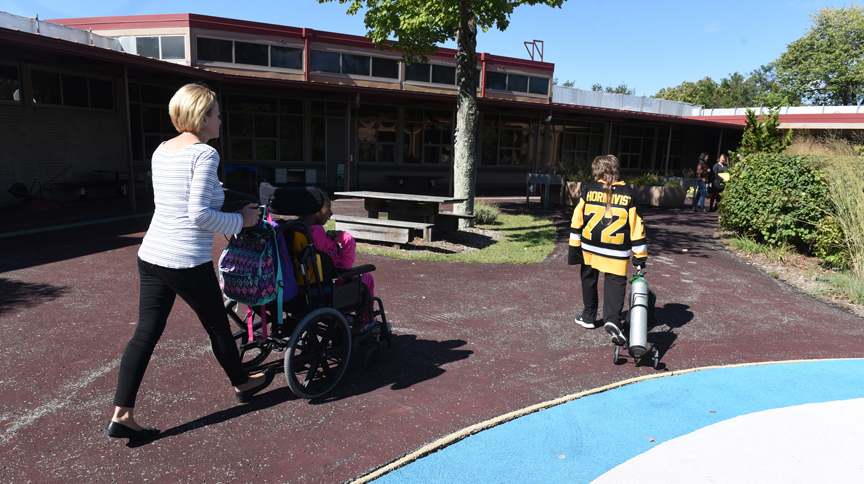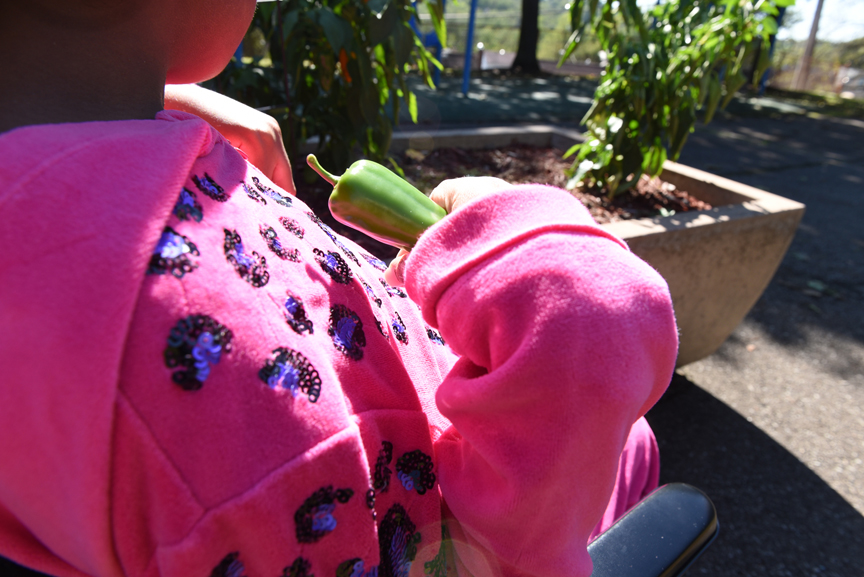ADA accessible gardens create well-rounded experience for students
Posted on: October 24, 2019 | Written By: Doug Oster |
The soft plumes of tall, ornamental grass sway in the breeze in the Sensory Garden at Pioneer Education Center in the Brookline neighborhood of Pittsburgh. The school was designed and built as a special education center. Many of the students here are medically fragile or have multiple disabilities. A young boy being pushed in a wheelchair reaches out and drags his hand across the grass, which brings a smile to his face.
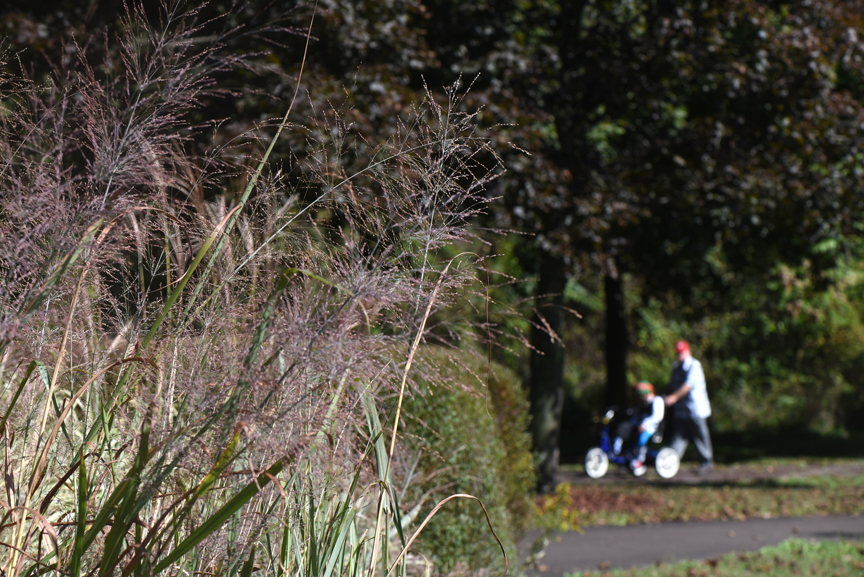
Soft ornamental grasses are one of the plants in the Sensory Garden at Pioneer Education Center in Pittsburgh.

Art DeMeo is director of community greenspace services for the Western Pennsylvania Conservancy’s community gardens and greenspace program. He worked on creating a Sensory Garden at Pioneer Education Center in Pittsburgh.
It’s one of three ADA accessible gardens created by the Western Pennsylvania Conservancy. Work for the garden at Pioneer started with a grant from the Grable Foundation, which funded the greening of all of the Pittsburgh Public Schools at the time. Each school had its own ideas, needs and individual issues for their landscape.
“We came to Pioneer and quickly realized it was a special situation with the unique students they have,” says Art DeMeo, director of community greenspace services for the conservancy’s community gardens and greenspace program.
DeMeo and his team worked with Marshall Tyler and Rausch, a prestigious landscape architect firm, to come up with the garden’s design. It was the start of the WPC really examining accessibility in their gardens overall. The garden uses special planters and benches, and it even includes swings that can be used by students in wheelchairs.
The vine tunnel is covered in green foliage; fuzzy lamb’s ears are planted throughout the garden. A rock fountain, which bubbles with water from the center, is a big hit as it’s situated within reach of the students to feel the running water. There are metal drums students can play made of recycled propane containers. A long solid path around the perimeter is used for walking, biking and wheelchairs.
“We tried to think of everything that would make a well-rounded experience for the kids,” DeMeo adds.
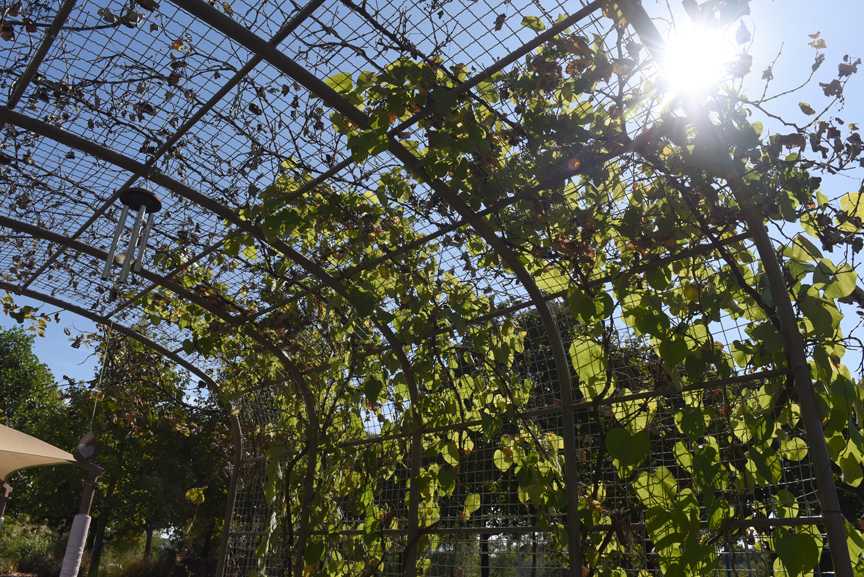
The vine tunnel is one of the features in the Sensory Garden at Pioneer Education Center in Pittsburgh.

Lamb’s ears are one of the plants in the Sensory Garden at Pioneer Education Center in Pittsburgh.
The other two gardens in the city were added to existing community gardens. One is in Homewood, and it was funded by RAD, the city of Pittsburgh and the Delta Sigma Theta sorority. The other is in Shadyside, funded by RAD and UPMC.
The planters in those gardens are also specially designed for accessibility and constructed out of all-natural materials.
“It’s just amazing to watch those kids get their hands dirty,” DeMeo says with a smile.
WPC trucks are now also loaded with special gardening tools that allow any disabled gardeners to participate in gardening activities. DeMeo is working on expanding the program to add more ADA accessible gardens throughout the region.
David Lott, Pioneer’s principal, is all smiles as he talks about how important the Sensory Garden is for the campus.
“The garden is something special for the students,” he says. “Everything has been designed to stimulate or relax students based on their individual needs. It allows them to experience nature.”
He enjoys the fact that many of his students will often look out the window at the garden, chomping at the bit to enjoy the outdoor space. He explains why the garden is special for the students.
“Getting a chance to have the kids come out here, see them interact with nature and give them a chance to just be kids,” Lott says.
The staff at the school enjoys the garden, too, often eating lunch in the landscape. When asked what is the most important aspect of the garden, he pauses and says, “The openness, we forget that our students don’t have all the unique opportunities other kids have. What kid doesn’t like going outside and enjoying nature?”
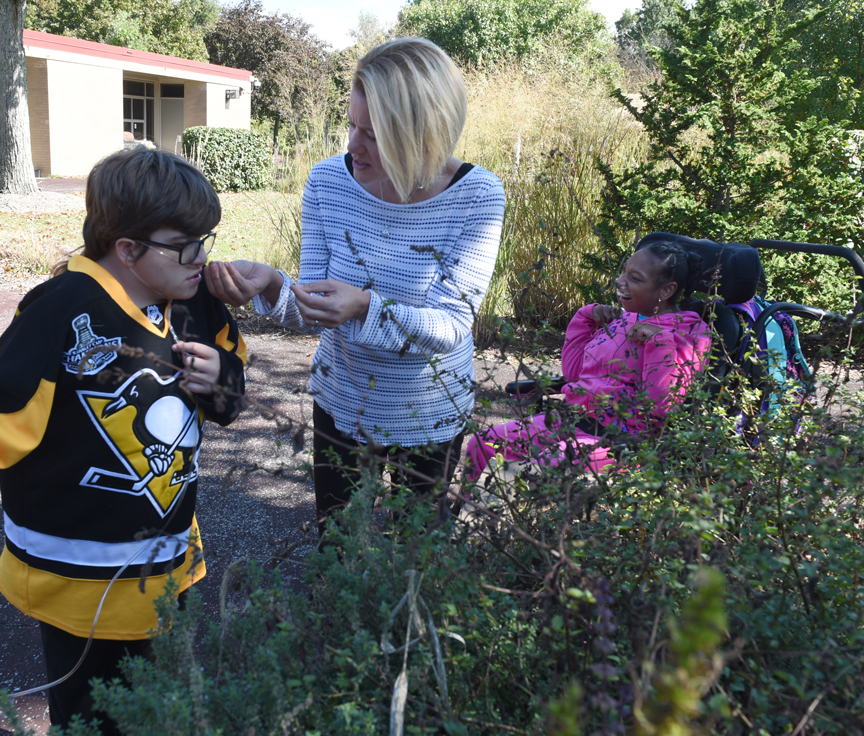
Cody Clegg, 13, (left) tries to identify an herb by its aroma. Suzanne Ambrose is the activities of daily living teacher at Pioneer Education Center in Pittsburgh. She and her students start seeds every year for the Sensory Garden at the school. To the right is Jordan Comans who harvested peppers with Ambrose and was also enjoying the aromatic herbs.
Suzanne Ambrose is the activities of daily living teacher at the school and begins the season by starting seeds indoors with her students. Today she’s picking peppers with the help of students Cody Clegg and Jordan Comans. Many of her students can’t eat the culinary treats harvested from the garden, but there are other ways to enjoy the plants. Ambrose works her way over to another raised planter, picking different aromatic herbs and letting the students smell and identify them.
This year they grew cherry tomatoes, peppers, herbs and more.
“The fun part for me,” she says smiling, “is to be with them while they enjoy this area. I get to watch them experience and learn, hands on. They get to pick the cherry tomatoes and pop them right in their mouth.”
Many students don’t have access to a garden where they live, and that’s why Ambrose believes the garden is so significant.
“Every kid should have an outdoor living space,” she says. “Every kid should have the opportunity to see the trees turn colors, to grow vegetables; it’s a major part of life.”
Doug Oster is editor of Everybody Gardens, a website operated by 535Media, LLC. Reach him at 412-965-3278 or doster@535mediallc.com. See other stories, videos, blogs, tips and more at everybodygardens.com.
More from Everybody Gardens
See also, How To Grow Garlic Bulbs
Video: The Horseradish Spectacular: How to grow, harvest and process the spicy root.
Touching story, A memorial garden of dahlias.
